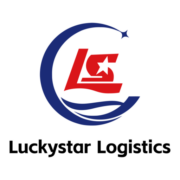Hazmat freight shipping is one of the foundations of modern industries, as hazardous substances and finished products often need to be transported in bulk across long distances. Each material and product carries unique risks that must be managed from classification to delivery. This guide aims to consolidate and present to you an overview of hazmat shipping and, more importantly, how a freight forwarder could help you navigate the process of hazmat shipping.
Shipping Basics of Hazardous Materials
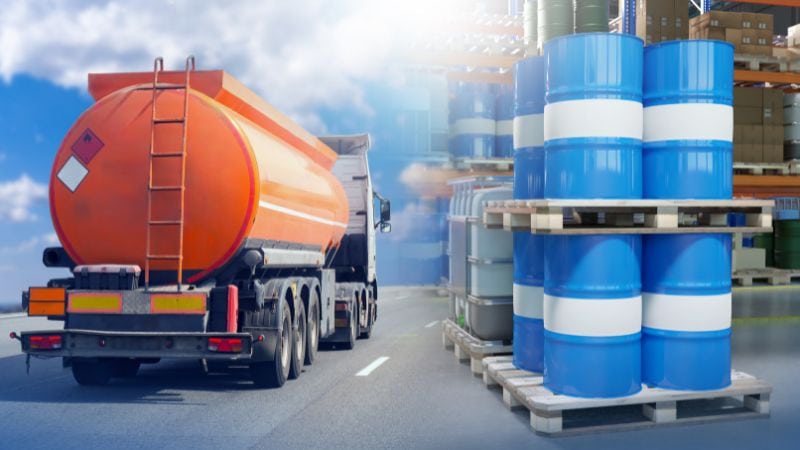
A shipment becomes hazardous when the material is regulated because it poses a risk to the health of workers or the integrity of transport carriers. That includes both industrial chemicals and common items shippers sometimes underestimate: power banks and e‑bike batteries (lithium), fragrance products with alcohol, spray paints and aerosols, certain inks and adhesives, or even dry ice.
To determine if a product is hazardous, start with the Safety Data Sheet (SDS). This document is provided by the manufacturers, importers, and distributors of hazardous chemicals, which points to hazards like flammability, corrosivity, toxicity, and often references transport classifications.
Misclassification sometimes happens because of the uncertainty with complicated cargos like mixtures, hazardous waste streams, or new battery packaging. However, a competent person from a freight forwarder could help you to verify before tendering the shipment.
UN Model Regulations
The UN Model Regulations originate from the recommendations of the United Nations Economic and Social Council in mid-20th century, and have received multiple reviews and revisions along with the development of hazardous freight. They now serve as the basis for most international, regional, national, and modal transportation regulations, ensuring a minimum standard for the safe transport of dangerous goods worldwide.
According to the regulations, hazardous materials are grouped into nine classes and divisions based on primary risk and finer distinctions:
- Class 1: Explosives (Divisions 1.1–1.6)
- Class 2: Gases (flammable, nonflammable, toxic)
- Class 3: Flammable liquids
- Class 4: Flammable solids, substances liable to spontaneous combustion, substances that emit flammable gas with water
- Class 5: Oxidizers and organic peroxides
- Class 6: Toxic and infectious substances
- Class 7: Radioactive material
- Class 8: Corrosive substances
- Class 9: Miscellaneous dangerous goods (e.g., certain lithium batteries, dry ice)
Many products have subsidiary risks: for example, a flammable liquid containing a toxic component may require a subsidiary hazard label. The HMT (Hazardous Materials Table) and modal codes specify when a subsidiary risk applies and how to communicate it.
Each regulated material is assigned a UN identification number (UNxxxx). The UN number ties directly to the proper shipping name and dictates packaging, marks, labels, and quantity limits. For many classes, a packing group (PG I, II, or III) indicates the degree of danger and packaging requirements, with PG I being the highest hazard. For others, like explosives, gases, infectious substances, and radioactive material, there are special standards that dictate their packaging.
Regulatory Framework and Responsibilities
While the United Nations Model Regulations provide the global foundation for hazardous materials classification, shipping across international borders requires compliance with a complex web of regional and national laws. Understanding these distinct regulatory frameworks and the legal responsibilities they impose is critical for smooth operation.
National Frameworks: The United States Example
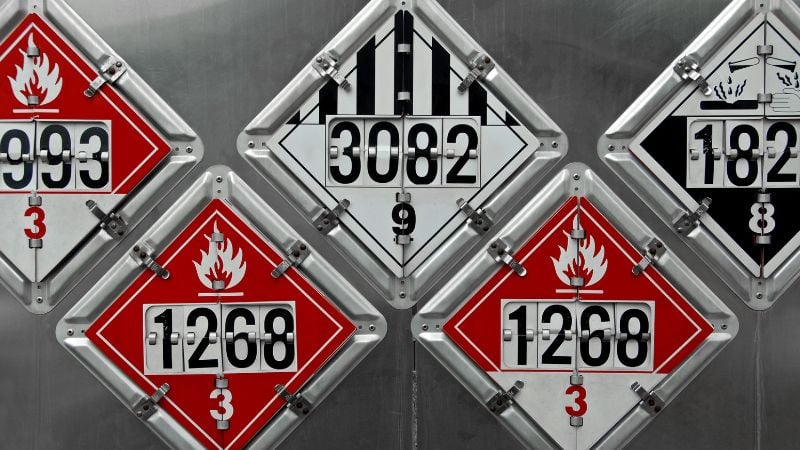
In the United States, the Hazardous Materials Regulations (HMR) under 49 CFR Parts 100-185 serve as the primary legal baseline. These codes of federal regulations are written and enforced by key federal agencies, including the Department of Transportation (DOT) and its sub-agencies: the Pipeline and Hazardous Materials Safety Administration (PHMSA), the Federal Motor Carrier Safety Administration (FMCSA) for road transport and the Federal Aviation Administration (FAA) for air transport.
A core principle of the HMR is that responsibility is shared throughout the supply chain. Legal liability is not diluted but is instead assigned specifically to each party involved.
- Shippers are responsible for proper classification, packaging, marking, labeling, and documentation.
- Carriers are responsible for accepting only compliant shipments, ensuring proper placarding, and handling the goods safely during transport.
- Hazmat Employees must meet mandatory, function-specific training requirements and perform their duties in accordance with the regulations.
Despite bearing the eventual and undisputable responsibility, you, as a shipper, can still seek external assistance when hazmat shipping isn’t your field of expertise. That’s when freight forwarders come in: freight forwarders serve both as professional consultants on hazmat shipping regulations, and operators for negotiation with carriers to ship hazardous materials by air, land, or sea.
Other Key National and Regional Systems
European Union (Road Transport): The ADR (Accord européen relatif au transport international des marchandises Dangereuses par Route) is the governing agreement for the international carriage of dangerous goods by road across Europe. It is highly detailed, with specific requirements for vehicle construction, crew training, and operational procedures.
Canada: The Transportation of Dangerous Goods (TDG) Regulations are Canada’s national standard. While harmonized with the UN model, they have distinct requirements for bilingual (English/French) documentation and labels.
North American Integration: For cross-border shipments within North America, shippers must comply with the originating country’s regulations (e.g., US HMR or Canadian TDG) and may also need to adhere to the destination country’s rules, such as Mexico’s NOMs (Normas Oficiales Mexicanas).
Mode-Specific International Codes
Compliance with national regulations is only the first step. The mode of transport imposes its own, often more restrictive, set of international rules. A shipment compliant for U.S. highway transport may not be compliant for air or sea.
Aviation: The IATA DGR (Dangerous Goods Regulations)
- Framework: Based on the ICAO Technical Instructions but often more restrictive. Adherence to the IATA DGR is mandatory for airline acceptance.
- Key Responsibilities: Shippers must comply with strict documentation (Shipper’s Declaration), specialized packaging that has passed performance tests, and precise quantity limits. Special attention is required for items like lithium batteries, which are subject to rapidly evolving, highly restrictive rules. Carriers may also impose “operator variations,” which are airline-specific requirements that are even stricter than the base IATA rules.
Maritime Shipping: The IMDG Code (International Maritime Dangerous Goods Code)
- Framework: A mandatory international code governed by the International Maritime Organization (IMO) for sea transport.
- Key Responsibilities: This code introduces critical concepts not found in other modes, including specific stowage categories (defining where on a vessel goods can be placed) and segregation tables (dictating which hazardous materials must be kept apart). It also has detailed provisions for identifying and marking marine pollutants.
European Road Transport: The ADR Agreement
As mentioned in the regional framework, ADR is the essential code for road transport across Europe, detailing requirements for vehicle tanks, packaging, and the training of the driver (who must carry an ADR training certificate).
In this chapter, we bring up a series of shipping regulations, and you may find them too much to handle, as each of them consists of piles of legal and technical documents with different specifications and parameters. But there is no need for you to read through each and every article: a qualified freight forwarder always stays updated with the latest hazmat freight regulations across the globe, and is ready to guide you through the whole process of declaration and clearance.
Role of Shipper: Packaging and Marking
The hazmat freight shipping begins with packaging and marking by the shipper, and it is a process that requires expertise and experience. It is recommended to work with your freight forwarder to ensure a solid start for the hazamat shipping.
Performance-Oriented Packaging and Packing Groups
Using US standards as an example, the HMR adopts performance‑oriented standards. Instead of dictating a single box, the rules specify performance tests (drop, stack, pressure) that the packaging must meet for a given packing group.
There are some more details that you should pay attention to:
- Match the packaging authorization in Part 173 for your UN/PSN and packing group.
- Use inner packaging, cushioning, and closures exactly as tested, as temporary substitutions can void the certification.
- Retain manufacturer closure instructions with shipping records.
- For combination packaging, respect maximum inner quantities and gross weight limits.
- For batteries and equipment, follow special provisions and packing instructions (air and sea have detailed variations).
Marks, Labels, Placards, and Limited/Excepted Quantities
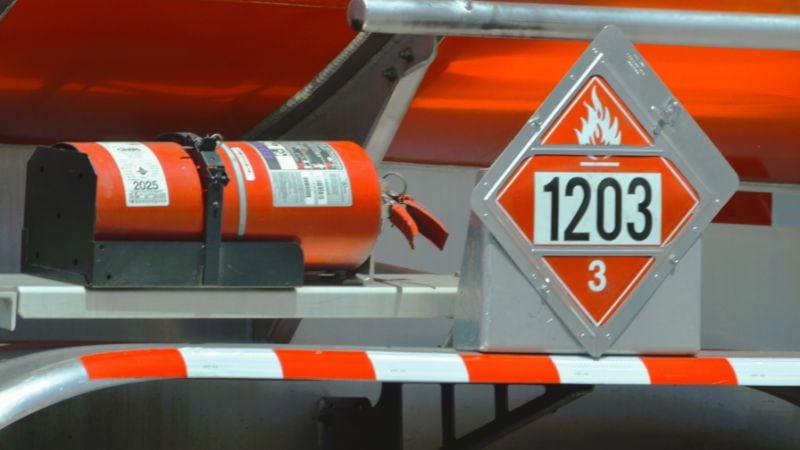
The proper marking of packages is also a fundamental requirement. Each package must display the proper shipping name and its corresponding UN number. In certain cases, technical names are also required.
Furthermore, packaging that is built to a UN specification must bear the full UN code. Packages shipped as “Limited Quantities” require the distinct black-and-white LQ mark, while those moving under “Excepted Quantity” provisions need the E-mark, which in some cases also includes shipper and consignee details.
In addition to these marks, the application of hazard labels is critical. These labels must be durable, remain completely unobscured, and be positioned on the same surface of the package and near the shipping marks for clear visibility.
For highway transportation, placarding the transport vehicle is required when the total quantities reach regulatory thresholds, with some hazardous materials being placardable in any amount. When necessary, the correct placard, such as FLAMMABLE, CORROSIVE, or CLASS 9, must be displayed on all four sides of the vehicle.
Role of Freight Forwarder: Why Choose Luckystar Logistics
Transporting hazardous materials is a task that requires joint efforts between the shipper and the freight forwarder. Now that you as a shipper have learnt the general outline of hazmat freight shipping, it is time to choose the other entity that will be responsible for detailed opertaions: your freight forwarder.
The Multifaceted Role of a Hazmat Forwarder
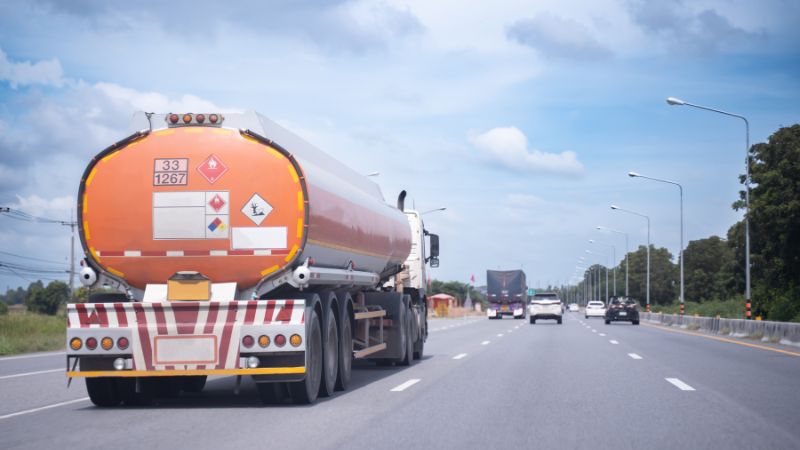
A competent hazmat freight forwarder does much more than book space on a ship or plane. Their role encompasses a full spectrum of critical services:
-
Classification and Consultation: They begin by verifying your material’s classification using the SDS and their extensive knowledge of the UN Model Regulations.
-
Regulatory Navigation and Compliance Assurance: Freight forwarders are your dedicated compliance department, staying current with the ever-evolving national regulation frameworks. They ensure your shipment meets all origin, destination, and transit country requirements.
-
Packaging and Marking Guidance: Advice on the correct packaging, inner materials, and secure closure methods are also within their capacity, which ensures your shipment is presented correctly to carriers and authorities.
-
Documentation Perfection: They prepare and review critical shipping papers and documents, including the multi-modal Shipper’s Declaration for Dangerous Goods and other documents for customs clearance and carrier transport.
-
Carrier Negotiation and Placement: Not all carriers are willing or certified to transport hazardous materials. Your forwarder has an established network of vetted carriers that accept hazmat goods and understand the specific stowage and segregation rules required.
The Professional Excellence of Luckystar Logistics
In a field where expertise is paramount, Luckystar Logistics provides the reliable and knowledgeable partnership you need for hazardous materials shipping. Our foundation, built by experienced freight forwarders, is your assurance of a capable and dedicated handler for your most sensitive shipments.
Here’s what sets Luckystar Logistics apart:
- Founded on Experience: Though established in 2022, our team brings over 20 years of combined experience in logistics. This deep industry knowledge is directly applied to navigating the complex rules for hazardous materials, ensuring your shipments are handled correctly.
- Reliable and Flexible Global Service: We ensure reliable on-time delivery for your hazardous goods by air, sea, or road. Our flexible solutions allow us to adapt to the specific needs and constant changes of hazmat shipping, providing you with dependable options across our key trade lanes in China, the United States, Canada, and Europe.
- Comprehensive End-to-End Support: We specialize in door-to-door freight shipping, which is essential for managing the entire chain of custody for hazardous materials. From warehousing to customs clearance, our integrated approach ensures every step is managed carefully.
- A Commitment to Your Success: Our mission is to streamline supply chain operations and help our clients grow. We apply this to hazmat shipping by providing exceptional service and creating value, treating your complex logistics challenges as our own.
Let Luckystar Logistics be your guide. Contact our team today for a consultation and experience the difference that a dedicated and experienced partner can make.
Frequently Asked Questions
What are the specific training requirements for a hazmat employee?
Taking US DOT regulations as the example, they mandate that all hazmat employees receive comprehensive, function-specific training. This training must cover general awareness/familiarization, safety, and security awareness. Crucially, employees must receive in-depth, job-specific training on the regulations that apply to their duties (e.g., classification, packaging, or documentation). This training must be recurrent and refreshed at least once every three years, or sooner if regulations change significantly.
Are there different insurance considerations or liabilities when shipping hazardous materials?
Yes, and they vary greatly. Standard cargo insurance policies often have exclusions or limitations for hazardous materials. Shippers must explicitly confirm that their policy covers “dangerous goods.” Furthermore, liability limits in a standard carrier contract (bill of lading) may be insufficient to cover the extensive costs of a hazmat incident, which can include environmental cleanup, emergency response, and third-party damages. It is critical to review insurance policies for exclusions and consider additional shipper’s interest insurance to fill any gaps.
What is a Hazmat Security Plan, and is my company required to have one?
A Hazmat Security Plan is a written document required for shipping certain high-risk hazardous materials. The requirement is triggered by the material’s hazard class and the quantity in a single shipment. For example, large quantities of materials classified as toxic, flammable, or explosive will likely require a plan. This plan must identify security risks, outline specific measures like personnel screening, access controls, and en-route security.
